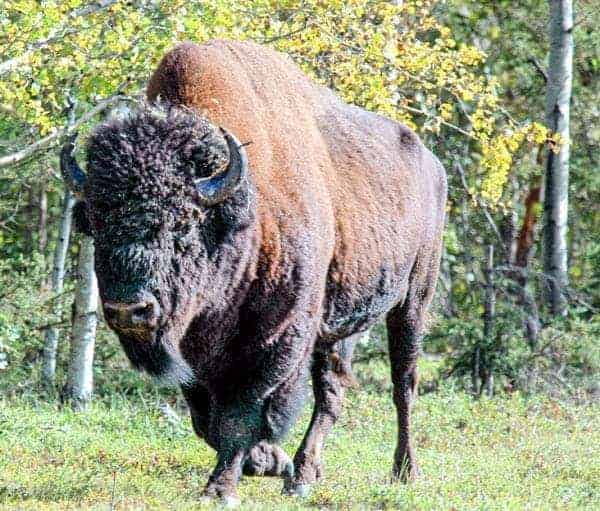
There are currently close to 3,000 bison living in Wood Buffalo National Park.
Despite a federal plan to save it, Wood Buffalo National Park's status as a world heritage site is still under threat, says the United Nations.
In a June 7 draft decision, the United Nations Educational, Scientific and Cultural Organization (UNESCO) said Canada must expend "considerably more effort" or risk having the park added to its list of endangered world heritage sites.
The park's environmental health is declining, states the draft decision. The quantity and quality of water flowing into and out of the park is under threat from the planned Site C Hydroelectric Dam in British Columbia, the Athabasca oil sands, and their associated tailings ponds, climate change and other factors.
Covering almost 45,000 square kilometres of grasslands, wetlands and waterways, Wood Buffalo is the largest national park in the country. It was established in 1922 to protect one of the world's last herds of free roaming wood bison and is the only breeding ground for the endangered whooping crane. The Peace-Athabasca delta within the park is one of the world's largest inland freshwater deltas.
It was designated a UNESCO World Heritage Site in 1983. However, in 2014, the Mikisew Cree filed a complaint with UNESCO that Wood Buffalo was under siege. UNESCO investigated in 2016 and has threatened to put the park on its list of endangered sites.
In response, the federal government developed a five-year, $27.5 million plan that includes over 140 actions to protect the park.
Despite these efforts, the federal plan inadequately addresses a number of threats to the park including oil sands development and the Site C dam, states the decision.
“Considerably more effort will be needed to reverse the negative trends at a time when climate change combined with upstream industrial developments and resource extraction are intensifying,” it reads.
Kris Brekke, executive director of the Canadian Parks and Wilderness Society's NWT chapter, echoed UNESCO's concerns.
"The quality and quantity of water flowing from the delta has a significant influence on the NWT," explained Brekke. "The Slave River begins its course here flowing into Great Slave Lake all the way down the Mackenzie River."
"It is realistic to expect that some difficult political discussions involving water will be in our future if conditions in Wood Buffalo continue to decline," he continued.
Parks Canada spokesperson Megan Damini said the park is not expected to join the UNESCO List of World Heritage Properties in Danger.
"While acknowledging that there is more work to be done, the draft decision affirms the Government of Canada’s commitment to the on-going protection and management of Canada’s largest national park and world heritage site," she wrote in an email. "The Government of Canada, and its partners will continue to work together to advance the measures outlined in the action plan."
The action plan is already being implemented, she said. This will mean strengthening relationship with Indigenous partners, gaining a stronger understanding and management of the delta, establishing a new conservation area adjacent to the park and recovering species like the whooping crane and wood bison.